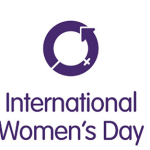I usually write at a quicker pace when something happens like the earthquake that hit the north east part of Japan. The death toll now exceeds 5,000, with more than 13,500 people still missing. It’s heart-wrenching to see the recent images of the once beautiful Tohoku region. To be honest, I have not had the right words to convey my sadness for the people of a country I have yet to visit.
My friend who is from the area that was hit says that the Japanese thought they were well prepared and trained for earthquakes (so many earthquake drills and strict building codes), but this one was too big for anyone’s imagination. There are still aftershocks, with 3-7 hours of scheduled blackouts everyday causing a severe shortage of food and goods. She tells me that while Japan is going through the biggest crisis since WWII, people are dealing with this situation very patiently and working very hard as a unified country.
When the earthquake in Haiti struck, my 6 year-old daughter was traumatized. She walked into the room when the TV was on, displaying gruesome images of dead bodies, and proceeded to have nightmares for many nights afterward. Not only that, but she wouldn’t talk about it, she wouldn’t let me explain anything. I had to ask the psychologist to have a word with her at school (but for some reason she never followed up on it, which doesn’t say very good things about my school system).
This time the TV didn’t need to be on. I didn’t have to say a thing about the events that unfolded. Both my 6 and 7 year-old heard about the earthquake on their own at school. Their teachers mentioned it during school. They both came home with questions, and I had to carefully relay what I knew, but it’s been difficult. How do you explain nuclear reactors and radiation that is slowly making its way to America?
My first tactic was to find out what they knew and make sure it wasn’t too much. I tried to put the event into simple terms to provide a basic understanding. Kids don’t need to know anymore than just that. Just like with Haiti, I made them both realize that the event happened far away. I always try not to lie and say that these events don’t occur in the U.S., but I make it clear that these particular events did occur far away and are in no way near us. I also explained that mommy and daddy ae making donations to help the people of Japan and that giving money is the most important thing we can do.
It made me really happy when my daughter suggested we go door to door to collect money for the people of Japan. She has just completed collecting money for Girl Scout cookies, so grass-roots fund-raising is at the forefront of her mind. She also suggested doing her lemonade stand, which is another viable option and one that will get my kid’s juices flowing about making a difference in someone’s world.
Tonight I read about an amazing effort to raise money for Japan. Students Rebuild partnered with DoSomething.org, to ensure students worldwide have a way to support their Japanese peers. Your kids can help Japan by making paper cranes. These simple yet powerful gestures will trigger a $200,000 donation from the Bezos Family Foundation – $2 for each crane received – to Architecture for Humanity’s reconstruction efforts in Japan. Once they reach our goal of 100,000 submissions, the cranes will be woven into an art installation – a symbolic gift from students around the globe to Japanese youth.
to support their Japanese peers. Your kids can help Japan by making paper cranes. These simple yet powerful gestures will trigger a $200,000 donation from the Bezos Family Foundation – $2 for each crane received – to Architecture for Humanity’s reconstruction efforts in Japan. Once they reach our goal of 100,000 submissions, the cranes will be woven into an art installation – a symbolic gift from students around the globe to Japanese youth.
I asked my friend, “what can we do to help?” She learned that extra funding will make a big difference in speeding up the rescue process. More than 40,000 people have been evacuated. The media has been reporting everyday there still survivors being found through such efforts. Evacuees are going through both physical and psychological stresses under the severe conditions at evacuation centers.
She recommends giving to these relief funds:
Japan Society Japan Earthquake Relief Fund is committed to sending 100% of the fund directly to non-profits already working in the ground in Japan.
https://www.japansociety.org/
The Japanese Chamber of Commerce and Industry: This fund also goes straight to Japan but they accept checks only.
http://www.jcciny.org
The Japanese embassy in the U.S. is suggesting to contact American Red Cross:
http://www.americanredcross.org
Disclosure: I was not compensated for this post and all opinions are my own.







 Follow
Follow





Great post, Holly. I, too, struggled with how much, if any to share with my little ones. Sometimes I just don’t think they will be able to grasp this (nor do I want them to?) and other times I think they are able to grasp more than I think they can. I don’t know the right answer…but it is definitely something I’ve been weighing in light of the recent news.
Thanks again.
This is great! I am going to add it to the list of other Japan relief projects popping up online: http://blog.lookuppage.com/2011/03/how-to-reach-out-virtually-to-japan.html